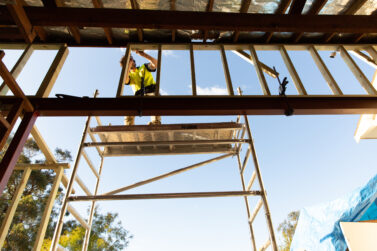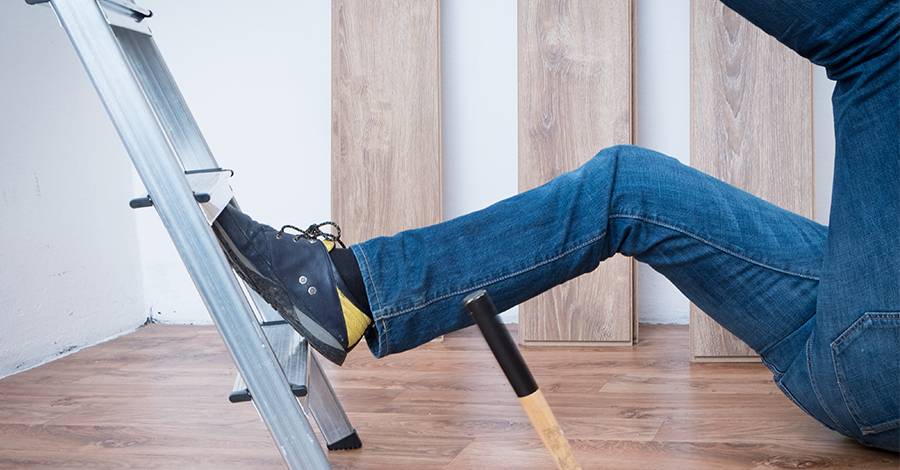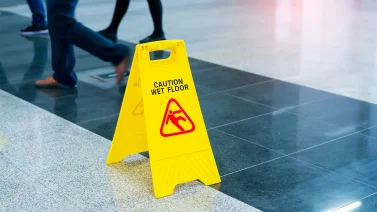
What You Need to Know Before You Start that DIY Project.
It’s embedded in our DNA as proud Australians to want to get our hands dirty and improve our homes whenever we can.
Whether it’s mending that annoying hole in the roof or putting up the backyard fence, there’s nothing quite like the satisfaction that comes from ‘Doing it yourself’ around the house.
But what about when things go wrong? What about when that sunny Saturday morning in the yard turns into a cold night surrounded by the white painted walls of the emergency room?
What lifestyle television programs and hardware store advertisements often fail to make clear is that DIY projects can be dangerous work and even hazardous to our health.
In the most recent study conducted by Flinders University across the calendar year, it was revealed that 3,318 people were hospitalised for an injury sustained while engaging in a DIY activity or project.
Like many accidents that occur within an enclosed environment, DIY accidents can be quite severe, but at the same time, very preventable. So it’s imperative that we get to know the causes, the injuries and what we can do to keep our day on the tools productive not harmful.
How are these injuries occurring?
Ladders and tools are our greatest assets when it comes to home improvements, but as it turns out, they can also be our most dangerous.
Ladder falls accounted for a whopping 38% of the total number of hospitalisations while powered hand tools and household machinery contributed 27%. Other falls and non-powered hand tools resulted in 15% and 7% respectively. And we can’t forget about the trusted old lawn mower – which accounted for approximately 8% of hospitalisations.

Find out how much you can claim.
Talk to one of our friendly lawyers. We’ll listen to you, review your situation, and tell you how much you can claim.
Call for FREE adviceRequest a callback
What injuries are we sustaining?
Due to the high volume of falls, fractures of the limbs, trunk, fingers and toes were the most common types of injuries that presented to the emergency room – accounting for 63 per cent of all fall injuries. Head injuries (consisting of concussions and soft tissue) and neck injuries made up 12 per cent of all DIY injuries, while ankle and foot injuries (dislocations, fractures and lacerations) accounted for 8 per cent.

Top tips you need to follow when attempting a ‘DIY’ project:
Don’t get caught home alone
Whether you’re using power tools or scaling a roof, it’s always a wise move to ensure someone else is present in the home. Even injuries such as open wounds that don’t cause incapacity can leave you disoriented, and so it’s imperative someone knows what you’re doing and can check in on you.
If you’re hesitant, don’t do it!
Human beings have great instincts, and quite often, it’s when we steer away from these instincts that we find ourselves in trouble. If any thoughts of hesitation swirl around in your head prior, then it’s probably best you don’t do it.
Grab a second pair of eyes
The prospect of starting and completing a DIY project can be very exciting, and sometimes that excitement can impair your judgement as to whether you are in fact capable of safely completing the job. So it’s never a bad idea to grab a mate, neighbour or family member to see what they think on the job and whether the goal is achievable.
Ready, set, ladder!
Falls from ladders most often occur because the ladder hasn’t been appropriately set. Always ensure your ladder is placed on level ground before climbing. If you’re using a single pole ladder that needs to lean up against another surface like a wall, make sure that surface is flat and doesn’t rock.
Call 13 15 15 or chat to us now for free advice
Chat nowFind out how much you can claim.
Get startedRelated articles.
Do I have a case?
Our senior lawyers will assess your case for free1.










